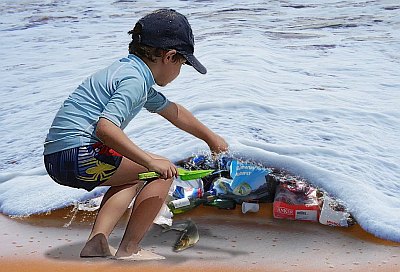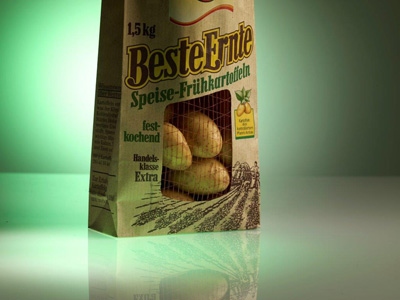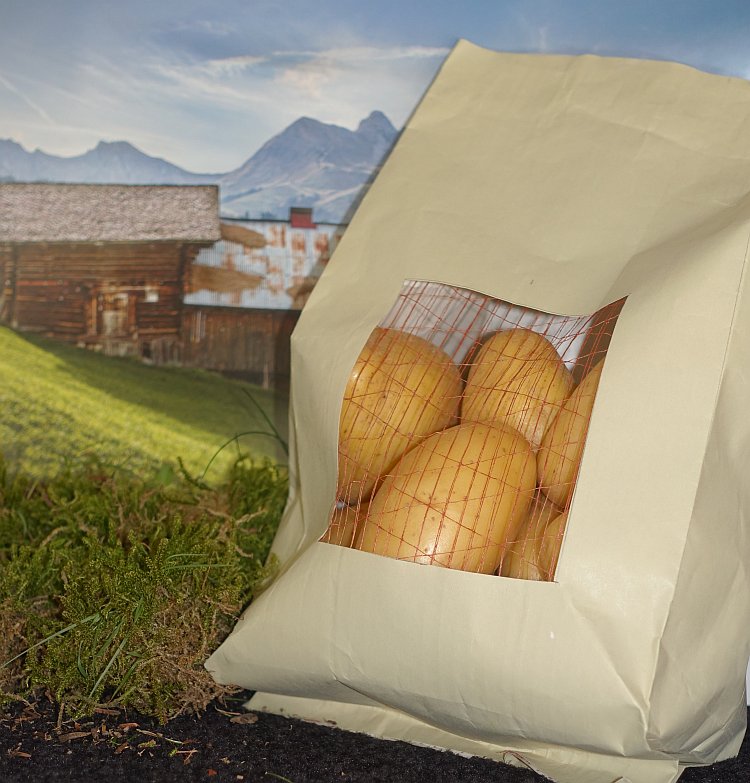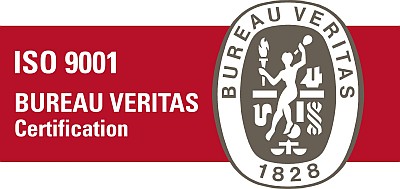Laid Scrims for sustainable packaging: Tear-resistant, made from renewable raw materials, biodegradable
We supply manufacturers of packagings with ecologically sustainable laid scrims made of renewable raw materials / natural yarns. Our laid scrims considerably increase the tear resistance of your packaging. They also offer the possibility of integrating them into sales packaging as breathable, visually attractive viewing windows.
This added value enables you to win new customers, avoid plastic waste and more easily meet the requirements of the packaging laws.
Packaging laws force manufacturers to avoid waste
The avoidance of packaging waste is becoming a cost and revenue issue for industry and trade, as the global waste crisis leads to ever stricter laws. For example the strict current packaging law of Germany is just a first tightening of the previous packaging ordinance. The current packaging and waste laws are only an intermediate step towards coming stricter regulations and bans in the European Union and many other markets.
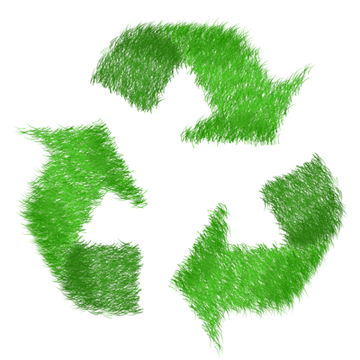 (read more: Example of the German packaging law)
(read more: Example of the German packaging law)
§ 21 (2) 2. obliges the industry or its take-back system to encourage the use of renewable raw materials.
Anlage 1 VerpackG shows how broadly the term “packaging” is legally defined: From sales flower pots to rolls on which fabric or film / foil is wound.
The biggest challenge for packaging manufacturers is § 16 VerpackG:
- From 2022, at least 90% by mass of paper, cardboard and paperboard packaging must actually be recycled.
- At least 70% by weight of plastic packaging must actually be recycled from 2022.
- Composite packaging must also actually be recycled to at least 70% by weight from 2022.
Your packaging will also have to be either almost completely recyclable or biodegradable in the future. Packaging manufacturers whose products do not meet these criteria will be withdrawn from the market in the foreseeable future.
Only 5.6% actual recycling rate for plastic waste
Citizens and politicians are also no longer willing to recognise “thermal recycling” (waste incineration, cement production) as recycling of plastic waste. According to the Wuppertal Institute for Climate, Environment and Energy, the actual recycling rate of plastic waste is only 5.6%. And this colourful mixture of recyclates is mostly only used as granulate for simple and low quality plastic products such as buckets and park benches.
Plastics from plant starch probably have no significant future:
- Since they are modelled on oil polymers, they have similar properties and rot much too slowly (read more on a german economic magazine).
- They compete with food (read more on the german website of an ecological ngo.
Therefore, the legal requirements of the next years will move in the following directions (priority in descending order):
- Waste avoidance
- Use of renewable raw materials
- Real recycling management respectively “cradle to cradle” production and recycling circuits
BAFATEX is committed to the transformation of industry towards sustainable production.
We support you by supplying your company with laid scrims, which consist of renewable raw materials and are biodegradable:
- Jute / burlap
- Flax / linseed
- Cotton
- Hemp
- Sisal
Plastic viewing windows have no future. As the potato sales packaging on this image shows, a scrim is an ideal, sales-promoting viewing window. Such a transparent product presentation at the point of sale is not possible with a fabric.
BAFATEX® offers you „BAFA®-laid scrims“ made of natural fibres as an ideal alternative to plastic foils and fabrics. In contrast to conventional fabrics, scrims have a multiaxial structure (read more).
Composite packaging with scrims:
Disposal in the recycling bin for paper/cardboard
In composite packaging, scrims prove their strengths over fabrics: High tensile strength and transparency combined with minimal volume fraction.
The following image shows a composite packaging made of paper, combined with a laid scrim made of viscose. The mass proportion of the laid scrim on the whole packaging is so low (even when glued over the entire surface on the inside) that this composite packaging can be disposed of in the paper recycling bin.
Due to their multiaxial structure and bonding, scrims are lighter, coarser meshed and more breathable than conventional fabrics. At the same time, they increase the tear resistance of the paper packaging, especially compared to punched holes.
Of course we also offer our natural fibre scrims with a bio-adhesive.
Scrims made of renewable raw materials as part of your packaging
Due to their structure BAFA®-laid scrims give your product the properties that your customers want in sales and transport packaging:
- Tear resistance
- Depending on the material and binder / adhesive a higher or lower stretchability and flexibility than conventional fabrics
- Higher transparency than fabric
- Low weight with high load capacity
- Air-permeable, breathable
- Low costs
You can reinforce your products by customizing several variables of BAFA®-laid scrims to meet your demands:
- Materials, combination of materials and their characteristics (e.g. soft, hard, waterproof, wash and dry cleaning resistant, heat-sealable, flame-retardant)
- Thickness of the threads
- Width of the mesh
- Elongation (1,7 – 23%)
- Breaking load (2,2 – 448 N)
- Tenacity (13 – 355 cN/tex)
- Angles (and hence force transmission) of crossing threads
- Colors
- Impregnators (Prepregs)
Fields of application and possibilities
In the packaging sector, scrims are particularly suitable for transport, sales and outer packaging, which must be reinforced against tearing.
The legal basis for packaging made of paper, cardboard and board with food contact are the EU Directive No. 1935/2004, the Regulation 2023/2006/EC and (when using waste paper) the recommendation XXXVI (36) of the Bundesinstitut für Risikobewertung.
With BAFATEX® laid scrims you expand the possibilities of your product features and create a visually appealing higher quality. Components made from renewable raw materials make it easier for you to meet the legally prescribed quotas for recycling or biodegradable packaging.
Know How and Consulting
As a matter of course we are certified by DIN ISO 9002 (since 1994) to assure a uniform and high quality of our products.
Based on our experience of decades and our technical expertise we would be pleased to consult you about the range of characteristics and processing technologies of our scrims.
Technical Literature
Diana Twede, Susan E.M. Selke: Cartons, Crates and Corrugated Board: Handbook of Paper and Wood Packaging Technology
Joseph F. Hanlon, Robert J. Kelsey, Hallie Forcinio: Handbook of Package Engineering
Walter Soroka: Fundamentals of Packaging Technology

